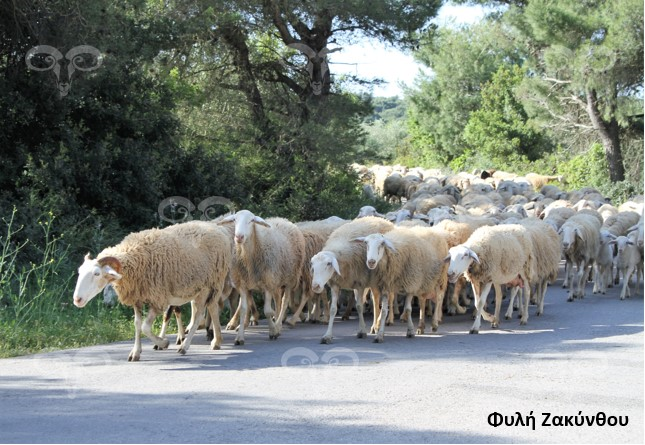History
The breed was formed and is bred on the island of Zakynthos. In earlier times small numbers were transferred to the mainland (Aetoloakarnania, Elia and Achaia). It is the largest Greek breed and differs appreciably from the remaining indigenous sheep breeds. Its origin is attributed to north Italian breeds, such as Bergamasca και Langhe, which are speculated to have arrived in Zakynthos during the Venetian rule between the 16th and 18th centuries. The impressive and large rams were formerly employed in staged ritual ram - fighting on major communal occasions of the island. A small Zakynthos herd was bred for a number of years at ‘Agios Mamas Agricultural Research Station’ in Chalkidiki from 1992 to 2002. The Union of Agricultural Cooperatives of Zakynthos participated in a breed monitoring programmed under the guidance of the Athens CAGR from 1996 to2010.
Morphological Traits
Zakynthos Sheep are of especially large size, coarse-woolled and thin-tailed. Rams weigh 65-85 kg and ewes 55-75 kg. Height at the withers for rams and ewes ranges between 65 and 87 cm.


Most rams carry large, strong, spiral horns. Ewes are mostly polled but a few display small, feeble horns. The head is large with a pronounced convex profile. The ears are long and pendulous. The back is level and the limbs very long and strong. The tail is long and thin.
Wool distribution on the body is sparse. The face, legs and tail are wool free. The quality of the wool is poor and the quantity produced small. The colour is solid white with very few animals showing spotting on the head and ears.
Population
According to the Athens CAGR data (2019), the total population of the Zakynthos breed is approximately 1,000 animals.
The status of the breed is considered ‘At Risk’.


